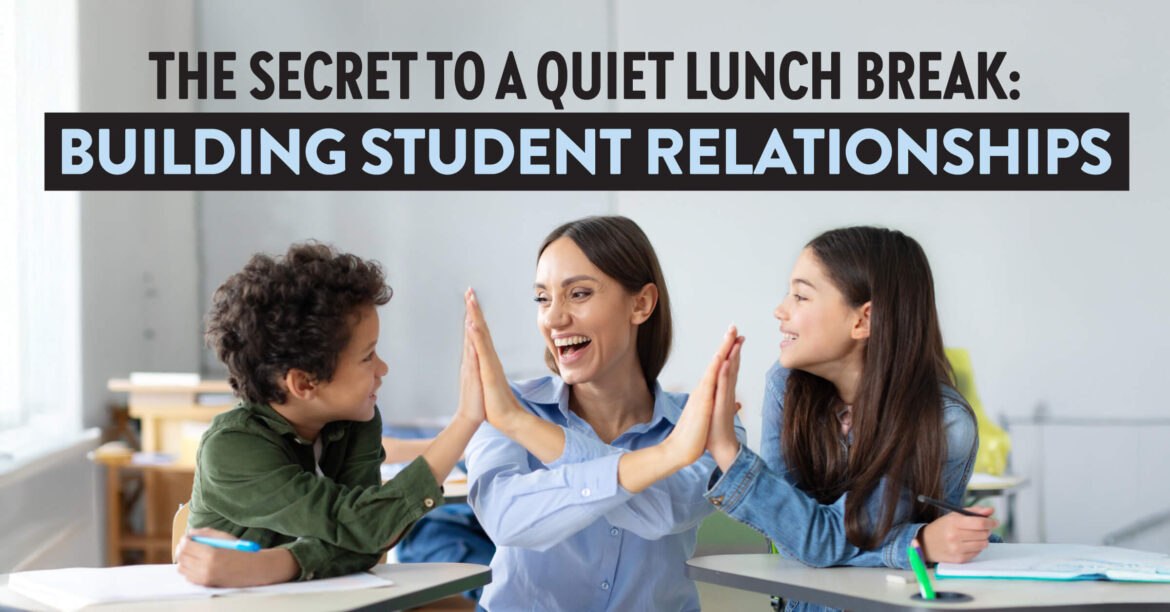By Rivka Cook
“David is escalating,” the office announced through my classroom intercom, just as I was about to get started on my lunch.
“Okay,” I replied, reluctantly leaving my turkey sandwich behind. “I’m on my way.”
David, to put it simply, was a difficult student. He could be aggressive, defiant, and lacking in empathy for his classmates. David had been suspended six times in the three years he had been at our school, and the first few months of fourth grade had been rough for both of us.
I knew if we were going to make it through the year, I’d need to focus on building our relationship. So, I had jumped in wholeheartedly, putting in a lot of effort. After six weeks, I’d thought things were finally improving. Until today.
As I walked onto the blacktop I saw Cheryl, our recess aide, consoling a crying student while David stood nearby, yelling at them.
“David!” I shouted, catching everyone’s attention. “David, come here.”
David stopped mid-sentence. As our eyes met, I gave him a confused look, as if to ask, “What are you doing?” My presence appeared to drain all the fight from him. I watched as his face fell and his shoulders slumped forward.
“Ms. Cook.” He started to cry, dropping to his knees. “Ms. Cook, don’t come over here. I’m sorry!” I ignored his pleas and made my way towards the scene.
As I asked Cheryl for some clarification, David started screaming, shaking his head at her. “No! No! Don’t tell Ms. Cook! Please!”
Familiar with David’s behavior, having dealt with it several times, Cheryl rolled her eyes.
“Fine,” I answered, wanting to get back to my sandwich. “David, stand up. Let’s go inside so you can tell me what happened.” He begrudgingly agreed, trailing behind me as we headed back to the classroom.
Although his offense turned out to be rather minor, David remained visibly upset for another 30–45 minutes, sharing a vulnerable side of his personality that I had never seen before. At one point, he even asked me for a hug.
I was confused. Since when was David affected by the ramifications of his actions? Why was he so remorseful? Then the answer hit me like a ton of bricks. It was from our new relationship.
David had shown more guilt today for letting me down than for his actual behavior. His recent change in attitude was not because his triggers had magically disappeared; he was trying to be better because we were better. He valued our relationship, and today he was worried our connection might be jeopardized.
My heart thumped with pride. Ahh, David did like me after all.
Since that experience, I’ve learned that building relationships with my students is by far the most effective classroom management strategy. Desperate teachers may try bribing kids with candy or praying for endless patience, but when you’ve got thirty-two fifth graders (four on daily contracts, three with IEPs, and five that don’t speak English), any extra stores of patience you may have had tend to run out pretty quick. Trust me.
So, throw away your “clip down” charts and forget about those “shame names” on the board. The secret to not using all your personal days during the first month of school is to focus on stopping bad behavior before it starts, instead of punishing students after the fact.
And how do you do that? By connecting with your learners. Because when they feel connected to and respected by you, they’ll try to be better for you.
Below are my top five ways to build strong relationships with your students. (And they just might lead to you enjoying a nice, peaceful lunch break as well!)
1. Gather Information
The first few weeks of school, teachers should be spending an enormous amount of time getting to know their students. What do they like? Who is in their family? Who are their friends? What do they want to be when they grow up? Find these answers through questionnaires, fellow student interviews, or “All About You” days. Then make a folder for each student and store this information.
In addition, have your students spend 5–10 minutes on a daily journal that encourages them to keep sharing. Prompt them with questions like: “What was the best day of your life?” or “Have you ever flown on a plane?” Not only will this data make for some great conversation starters, but as the year progresses, it can offer you a “why” behind so many of their behaviors.
If you can’t name five personal things about each of your students by the winter break, you have not satisfied this requirement.
2. Home Visits
Students absolutely love it when a teacher stops by their home. Why? Because they get 100% of your attention in their own, personal space. Your visit may only include a short five-minute conversation on the porch, but if you take a little treat and compliment your student in front of their family (something like, “I wanted to let you know that Tina has really been focused lately,” for example) your student will remember those five minutes for the rest of their life. Take the time, keep it positive, and be sincere.
3. Celebrate with Them
Everybody wants someone to care about them, someone cheering them on. Setting small, weekly, and achievable goals with your students is a great way to facilitate this. Was their math score higher than last time? Did they go a day without interrupting class? Do something to show excitement for their achievements, and keep in mind that genuine enthusiasm goes a lot further than any physical reward you might offer.
It may seem pointless to focus on such small goals, but by the end of the year all of those little achievements will amount to a decent final test score. So, encourage your students to applaud each other’s success, give them public praise, and send several positive notes home. You will find them putting in the extra effort, just to see you celebrate.
4. Share Your Life
By definition, a relationship is a two-way street. Since every student wants a connection with their teacher, it’s up to you to meet them halfway. One way to do so is by sharing appropriate parts of your life outside of the classroom. Talk about your hobbies, favorite foods, or what you did over the weekend. Bring in pictures of your family, your pet(s). Offer your own answers to the journal prompts each day, or any past story that helps you seem relatable.
This type of communication makes students feel included, like they are a part of your life. It opens the door for them to share more with you as well.
5. Notice the Little Things
All students want to be seen and heard, and if you’re teaching in a room with 25+ kids, meeting that objective can be overwhelming. So, look for small, everyday opportunities to show students that you’re paying attention to them. Hand a pencil to a child as they frantically look for one, or quietly give a fidget toy to another who is struggling on a test.
Fulfilling their unspoken needs shows your students that you see them and, most importantly, that they can count on you. And don’t be surprised when your students start to return the favor!
David still had some hard days in my class, but the relationship I built with him will always remain special to me. On the last day of that school year, the two of us took a selfie together with tears streaming down our faces. We had both learned a lot from each other, and I was honored to have been part of his life.



